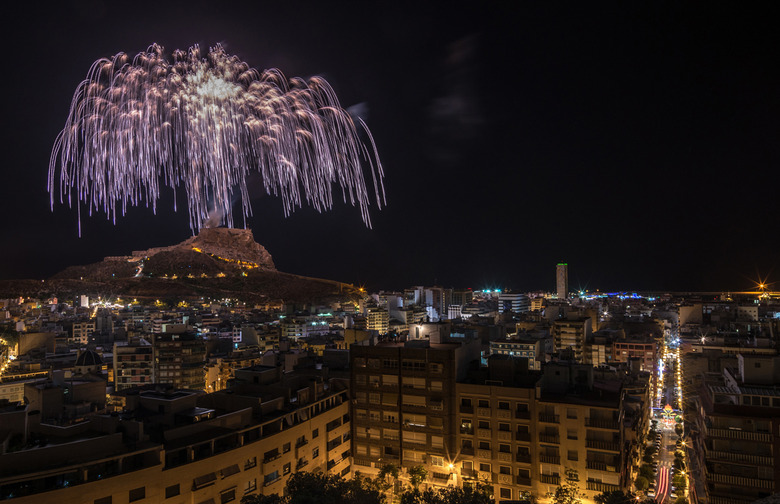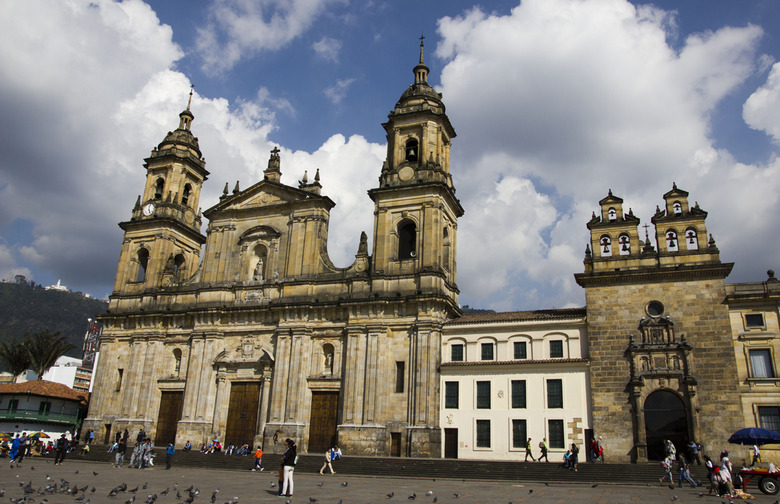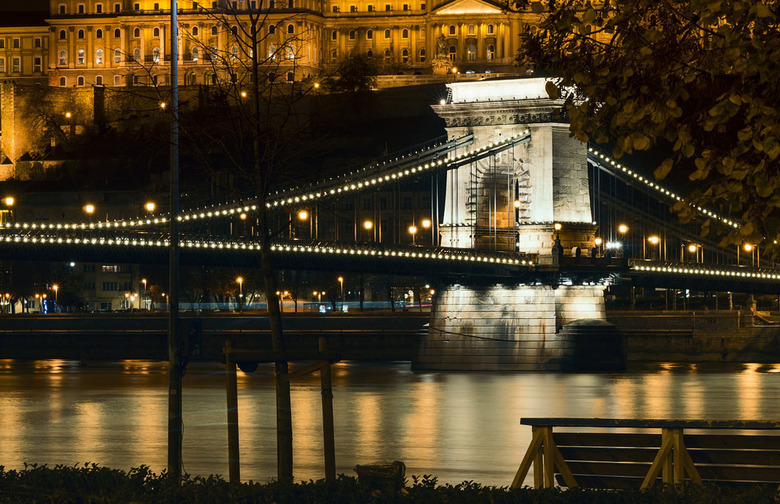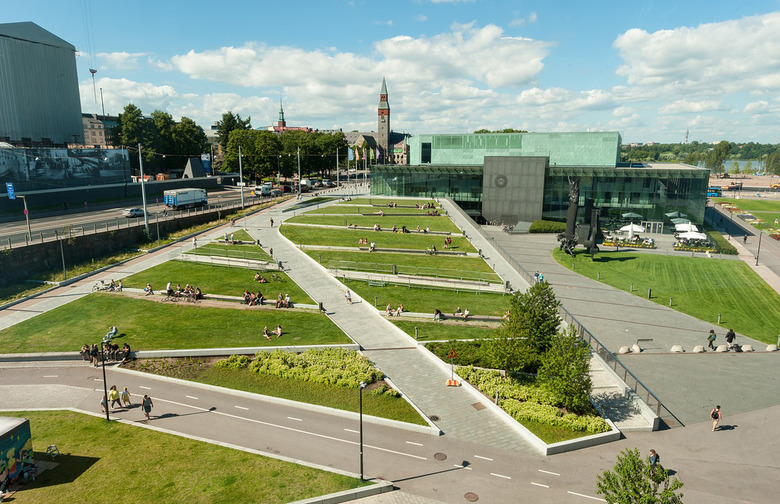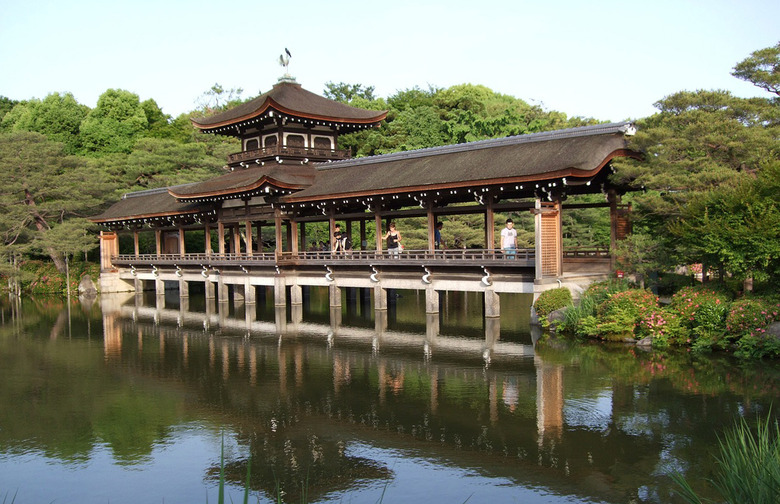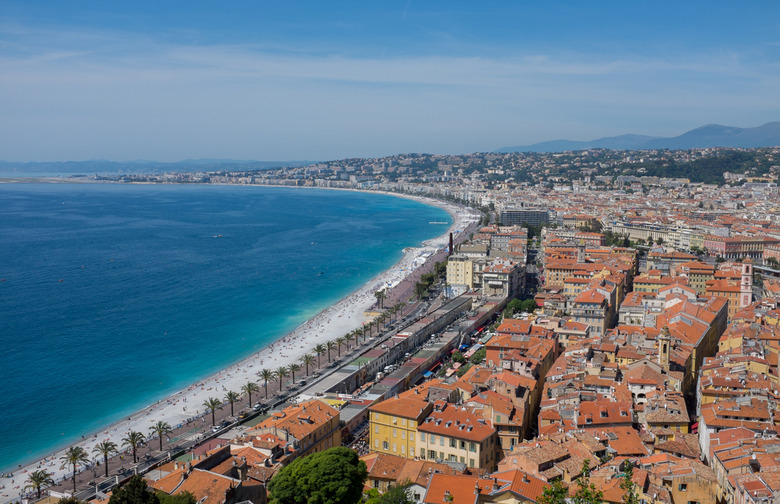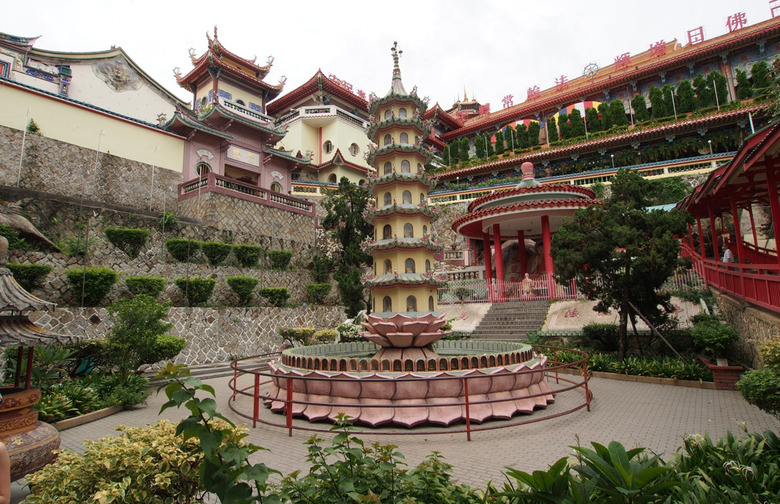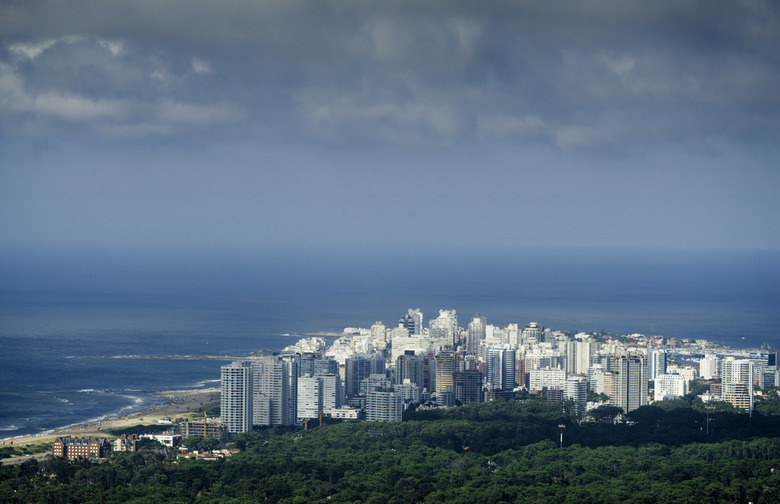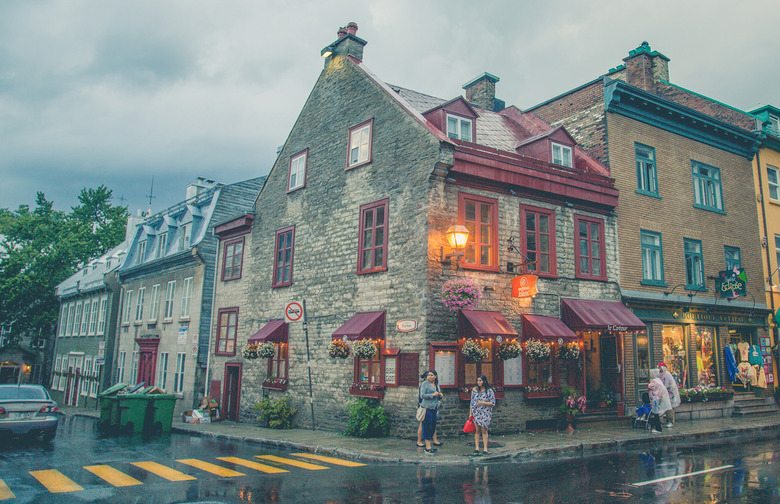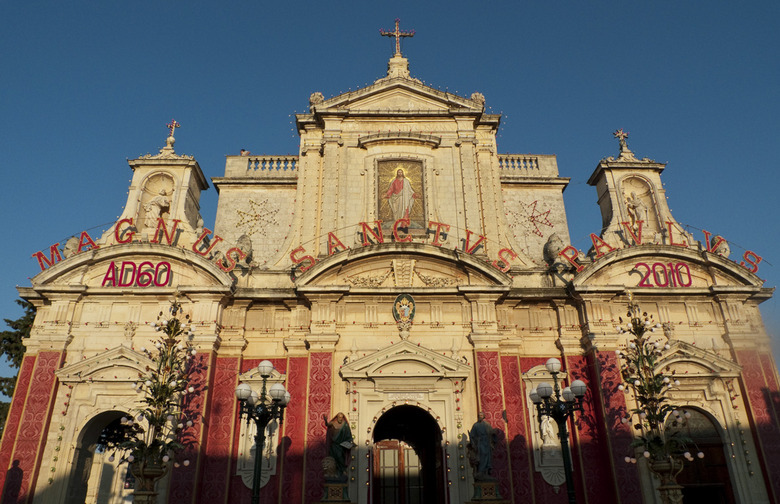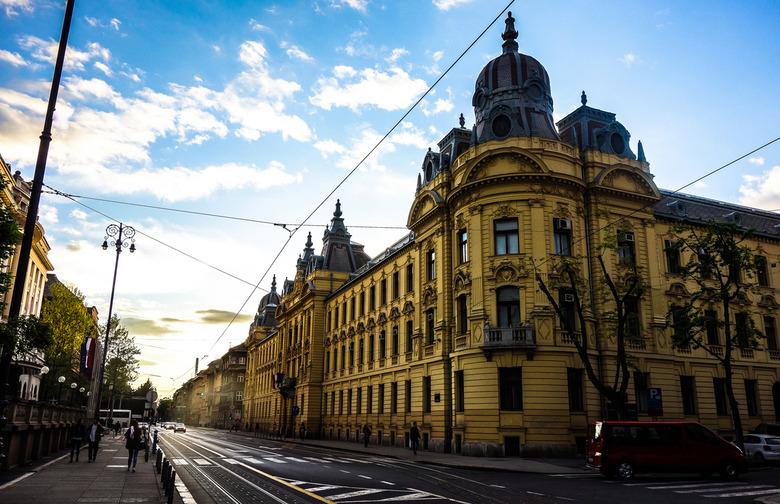Slideshow: 12 Travel Destinations For Every Food Lover's Bucket List
There are more types of cuisine than there are countries in the world (and the latter number approaches 200). Each type of food is steeped in history, culture, and, for individuals who've grown up with it, memories of family, friends, and specific events. Every world traveler (and food-lover) has a list of dream destinations, even if they've never been written down, and we've rounded up 12 areas that should be a shoe-in for any food-lover's travel bucket list. Our grouping highlights areas around the world, like Zagreb's sarma, or cabbage leaves filled with ground meat, and Kyoto's kaiseki ryori, a traditional dining style. Take a look, and start adding these food-centric cities and regions to your mental bucket list.
Additional reporting by Colman Andrews.
Alicante, Spain
This underrated city in the Valencia region, down Spain's Mediterranean coast from Barcelona, is famous for its seafood and its wide array of rice dishes. These aren't versions of paella (which is Valencian in origin), but just "arrós," rice — though in infinite variety (one restaurant lists 170 variations) — from soupy rice with artichokes, peas, and cuttlefish to dry, crusty rice with rabbit and snails. Don't miss the tapas at Nou Manolin or the tapas-plus at La Taberna del Gourmet. For a contemporary take on local food, try the stylish Monastrell, or venture into the countryside for a meal at the sophisticated, innovative L'Escaleta.
Bogotá
Colombia's vibrant capital is enhanced by Andean mountains and equally entrenched in hipness and history. Colonial and modern architecture preside over the diverse population and La Candelaria, the historic downtown district that houses everything from 300-year-old churches to popular restaurants and hotels. Monserrate and Guadalupe are can't-miss historic mountaintop sanctuaries, while the San Alejo flea market is a mecca of curiosities. The good news is that, while Bogotá is a must-see capital for any food-lover, visiting won't put a major dent in your wallet. Five-star hotels average about $90/night.
When it comes to food, Bogotá doesn't disappoint. A popular breakfast is santafereño, or hot chocolate with cornbread, white cheese, and a chicken-filled tamale. If that sounds intriguing, Pastelería Florida, established in 1936, is a pro at the dish. Another must-eat while you're in this energetic city is bandeja paisa, Colombia's national dish with beans, rice, ground beef or steak, chicharrón, chorizo, arepa, avocado, platano, fried egg, and more. And ajiaco, Bogotá's regional plate, consists of chicken, corn, and potato soup served with rice and avocado.
Budapest
Budapest is chock-full of history, as traces of human life as far back as the second millennium B.C. have been found near the Danube where the city now stands. Travelers can try their best to soak up that history with activities like traversing the Chain Bridge, or the first bridge to connect the hilly Buda region and the flat Pest region; watching a performance at the Budapest Opera House; visiting Hungary's Parliament Building and taking in the country's crown jewels; and taking a cruise on the Danube. The city doesn't disappoint when it comes to food, either — Hungarian paprika is a legend in and of itself when it comes to the country's cuisine. Dishes travelers should try include pörkölt, usually a beef, pork, or mutton ragout (sometimes made with chicken and onions) and combined with Hungarian paprika; túrógombóc, or cottage cheese dumplings; and főzeléks, or simmered vegetables thickened with roux. Also consider stopping by Costes Restaurant, the first Hungarian restaurant to win a Michelin star.
Cape Town
This port city on the coast of South Africa has a lot of landmarks to its name — Table Mountain, from which visitors can gaze upon the expansive city and harbor after journeying to the top in cable cars; Robben Island, the prison-turned-museum commemorating Nelson Mandela and dedicated to teaching about apartheid; and Long Street, the place for nightlife in Cape Town. Traditional dishes to try include boerewors, or South African sausage made from beef and mixed with pork or lamb and spices; Cape Malay curry, which is spiced with cinnamon, saffron, and turmeric; and braais, or South African barbecue. If you're looking for an unforgettable dining experience, head to the Rumbullion (or outdoor dining terraces) at the Roundhouse Restaurant, which is a UNESCO World Heritage Site. Fruit trees that are hundreds of years old surround the dining area, which looks out on mountains and sea.
Helsinki
The Finnish capital has lagged behind trend-setting Copenhagen and the increasingly vibrant restaurant scene of Stockholm, but the best new restaurants in the city are espousing a fresh, exciting approach to northern European cooking. Herring and other cured fish are ubiquitous, and be prepared to eat reindeer meat — steaks of the flavorful venison-like flesh, even smoked reindeer tongue cured and thin-sliced like prosciutto. Try anything with wild mushrooms at Restaurant Ask, wild game at Chef & Sommelier (both these restaurants boast a Michelin star), or a Finnish take on Mediterranean cuisine at the award-winning Grotesk, and be sure to visit the renovated, tongue-twisting Hietalahden Kauppahalli, a lively food hall in a former market.
Kyoto
Kyoto, the former capital of Japan for over 1,000 years, offers incredible sights like classical Buddhist temples, imperial palaces, and expansive gardens to anyone lucky enough to visit. UNESCO World Heritage Sites are in abundance here, and the city is steeped in culture, although modern cafes, art, and phenomenal cuisine are also prevalent. One of the many must-see sites is the rock garden at Ryoan-ji Temple, the purpose of which remains a mystery to all who visit, although rumors abound. Its Zen landscaping is a work of art in itself. As far as food goes, Kyoto definitely doesn't disappoint. Kaiseki ryori is a historical dining style celebrated in the city, where courses with local ingredients are served in a carefully prescribed order. For this style, head to Gion Karyo, or if you're the spare-no-expense type of traveler, Kitcho Arashiyama.
Nice, France
This sunny, sensuous capital of the Côte d'Azur is full of good restaurants, from the tiny bistros that crowd the hilly Italianate streets of Vieux Nice to the ornate two-star-Michelin Le Chantecler, the famed dining room at the Hôtel Negresco. The Cours Saleya is a must, the site of a colorful food market six days a week (and a flea market on Sundays), featuring the best pizza in Nice at Le Safari and the excellent Alziari olive oil shop, among other gustatory attractions. And if you've got euros to burn and don't mind a jaunt about 20 miles to the northeast, be sure to dine at Alain Ducasse's three-star Louis XV, possibly the most opulent restaurant in France, and a consistently superb temple of modern Mediterranean cooking.
Penang, Malaysia
This Malaysian state is regarded by many as the food capital of the country, so if you have the pleasure of visiting, don't miss George Town, one of the state's most well-known cities, especially when it comes to food. Assam laksa, an iconic Penang dish, is a spicy noodle soup with poached mackerel, tamarind, chiles, lemongrass, shrimp paste, and rice vermicelli. Head to Pasar Air Itam Laksa, a stall near Air Itam market, to try it, or find some on almost any major street. Other must-try dishes include mee goreng, or fried yellow noodles with garlic, shallots, onions, meat, and many other ingredients; and nasi lemak, one of Malaysia's most famous dishes, which is made with hard-boiled egg, anchovies, and rice cooked in coconut milk.
Punta del Este, Uruguay
This coastal city in southeastern Uruguay is becoming more and more of a glamorous getaway for any and all beach enthusiasts. La Barra is the area's hippest neighborhood, where there's a beach for everyone. Montoya is popular with surfers, José Ignacio is the spot for D.J. enthusiasts, and both Bikini and Manantiales are great for sunbathing. Shop on Avenida Gorlero, take a guided tour on horseback near Garzon, or visit Casa Pueblo, a museum showcasing Uruguayan art. Beaching makes everyone hungry, so after the sun and sand, head to L'Auberge and order the sweet waffles with dulce de leche. For dinner, try Marismo in José Ignacio Beach, which features wooden tables on the sand and is open from December to late February.
Québec City
Exploring this city on the Saint Lawrence River means walking through history, as it dates back to 1608. The Old Town is a UNESCO World Heritage Site and the only walled city north of Mexico. It offers up museums, cobblestone streets, and seventeenth- and eighteenth-century architecture. Explore bistros, cafés, and shops or check out Montmorency Falls, a beautiful slice of nature with a 272-foot waterfall. Check out the Old Port Market for fresh produce and local ingredients, as well as the fully-stocked French cheese shop near the entrance. For a memorable dining experience, check out Panache, a nineteenth-century warehouse that's been converted into an esteemed French eatery and has a rotating menu based on seasonal produce.
Rabat, Morocco
This coastal capital retains influences from its Islamic and French-colonial history. One of the must-see landmarks is Hassan Tower, a minaret intended to be the largest in the world at the time of its construction in 1195. Stop by the Kasbah district, encased by the walls of an eleventh-century fortress and part of a UNESCO World Heritage Site, with an Andalusian-style neighborhood great for photographing. Also in the district is the Kasbah Mosque, the city's oldest mosque that was built in 1150 and has views of the Atlantic Ocean. When food is on the brain, head to Dinarjat, which guarantees some of the best Moroccan food in the city, like couscous, salads, and tajines, all made with fresh local ingredients. The experience at the restaurant is also unparalleled — a guide with a robe and a lantern will lead you through the winding streets of the medina (or "old city") until you reach the carved door that marks the venue's entrance. For breakfast or lunch, visit Ch'hiwates du terroir, which specializes in slow food and organic ingredients. It's well-suited to both meat-eaters and vegetarians.
Zagreb
Historic cathedrals, open-air markets, and palaces hundreds of years old all tempt visitors to Zagreb, the northwestern capital of Croatia. The city boasts countless opportunities to enjoy the arts, too — theatres, museums, and concerts are in abundance, as well as unique Austro-Hungarian architecture. Sail, swim, or dance your heart out at a disco at Jarun Lake in the warmer months, and in winter, head to Mt. Medvednica for prime ski slopes. When you get hungry from all that exploring, stop by 5/4, or "The Fifth Quarter," a venue by acclaimed chef Dino Galvagno, with decorations that make the space resemble a forest hut. It also features a daily-changing menu of European-Mediterranean dishes. Other dishes exemplary of central Croatian cuisine include mlinci, or baked noodles usually paired with turkey or duck, and sarma, or cabbage leaves filled with ground meat. For breakfast, try ordering žganci, or grits with sour cream, cheese, bacon, or yogurt.

